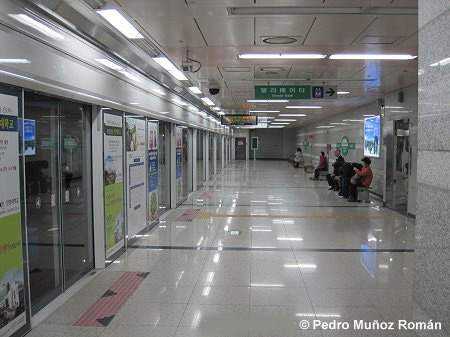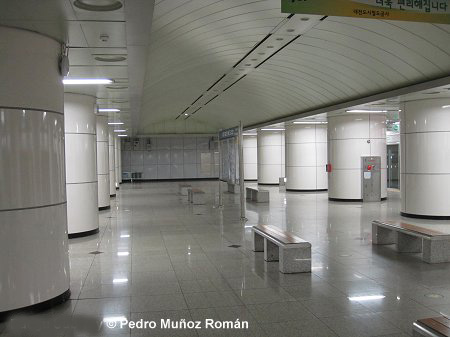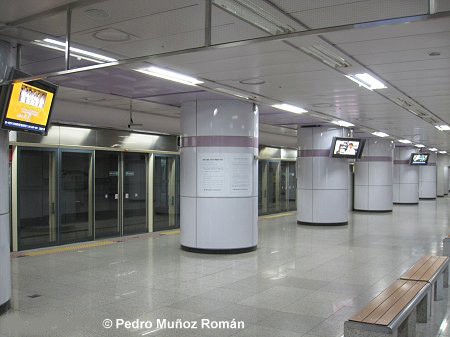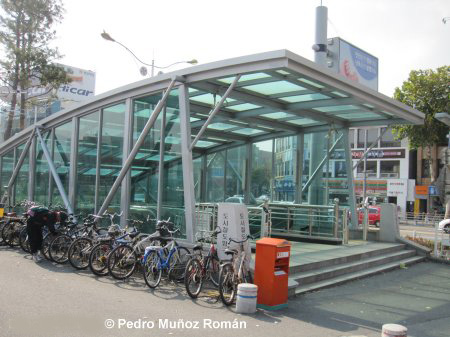|
[ UrbanRail.Net ] [ Europe ] [ Americas ] [ Asia ] [ Africa ] [ Oceania ] [ News ] [ Books ] [ Links ] |
|
DAEJEON
|
| South Korea |
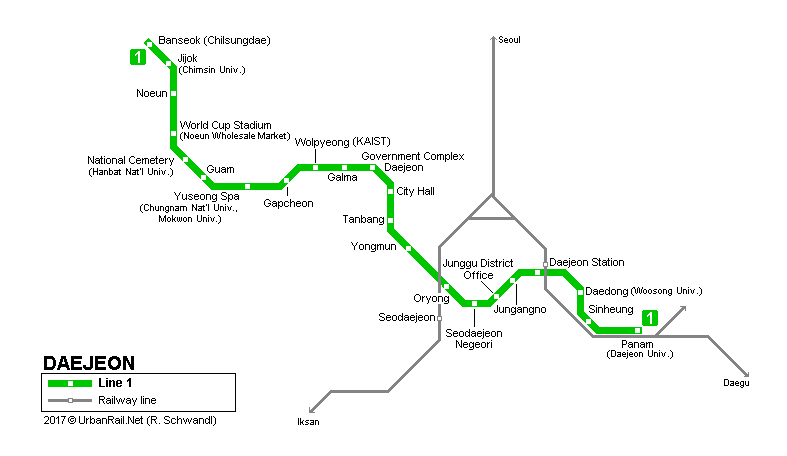
| System |
|
Daejeon* has some 1.2 million inhabitants and is situated in the centre of the Republic of Korea, 160 km south of Seoul. The first line of a planned 5-line subway network was opened on 16 March 2006, although it was initially planned to be operable for the Soccer World Cup held in 2002.
|
| Line 1 |
|
Line 1 runs from Wisandong (Banseok) in the northwest through the city centre and east to Panam. At Daejeon Station transfer is provided to Korean National Rail. The line is 22.6 km long with 22 stations. 16
March 2006 - Panam
- Government Complex (12.4 km) |
| Photos |
|
|
|
Projects |
|
Daejoen once had a project to build five metro lines (map), but this was cancelled. Instead, line 2 may be built as a sort of light rail circular line. Previously, Line 2 (30.5 km) was to become a ring line which would intersect with Line 1 three times. Line 3 (24 km) was to run north-south parallel to an existing rail corridor, Line 4 (9.7 km) was to become another north-south route further west, and Line 5 (15.6 km) was meant to cross the city from east to west. The total network was planned to reach 102 km. |
|
|
| Links |
|
Daejeon Transportation Corporation (Official Site) Daejeon Metro at Wikipedia
|
| Report |
|
In May 2017, Craig Moore sent his impressions of the Daejeon Metro system: Daejeon Metro is operated by DjeT and is a 21.2km, fully underground line with 22 stations. It runs from the southeast of the city at Panam (from where there is a long eastward ramp to the sheds), to the northwest around Banseok. The line meanders quite a lot and serves the main areas of the city centre including the main KTX station (for Busan) and the secondary KTX station (South Daejeon) which is a 10-12min walk from the subway station of the same name - the system is well used given its limited coverage. Station entrances are located on main street corners with basic angular structures and escalators/stairs to open-plan ticket halls. These are pale in colour and have few furnishings to lift the rather plain feel. Ticket machines dispense tokens for the distance based fares (either 1400 or 1500 Won). There is no customer office as such and no hard copy information, but being a single line, this is an easy system to navigate. Barriers provide access to further stairs to the platforms. The platform areas continue the pale theme with protruding stairwells on the platforms, seating and large mirrors. The full platform screens host a green strip map and on the main panels there is a basic geographic map and timetable (services operate from 0530-2330 with 10min base headways) - there is no RTI as is the norm in Korea. Most of the stations have side platforms, the ones in the north having a similar style with large pale hued tiling. Both terminuses have two island platforms and the non-used platforms have stabled trains. The Hyundai Rotem stock is not very stylish and is similar to the Gwangju stock. It operates 4-car through trains with side seating which are very comfortable and deeply cushioned (all station platforms are built for 6-car trains). There is an electronic strip map above doors and audio information in Korean, Japanese and English. In summary, this is a rudimentary system with station design, furnishings, brand and stock all quite basic. It is very clean and simple to use but it lacks any flair or style. |
* Daejeon was formerly transliterated into English as Taejon!
